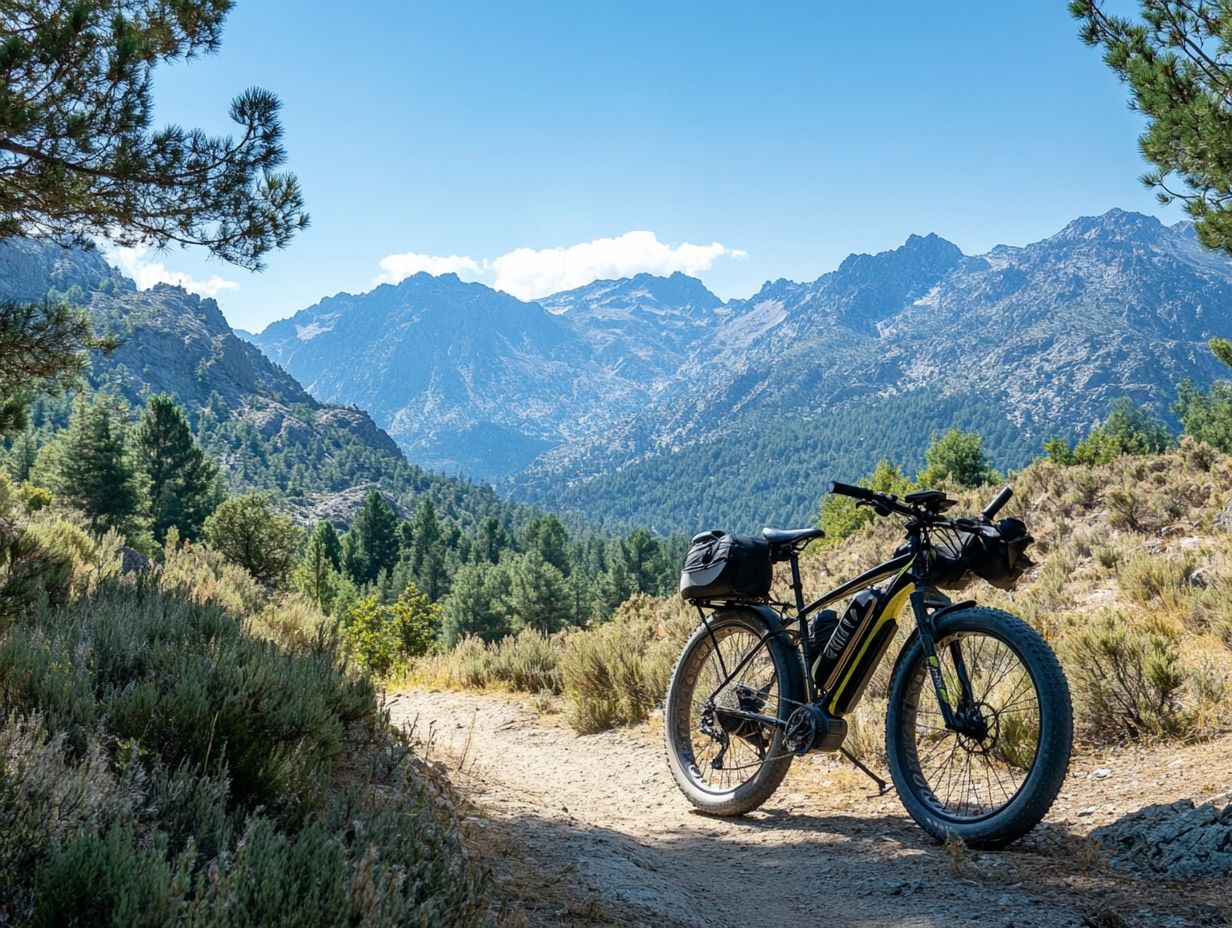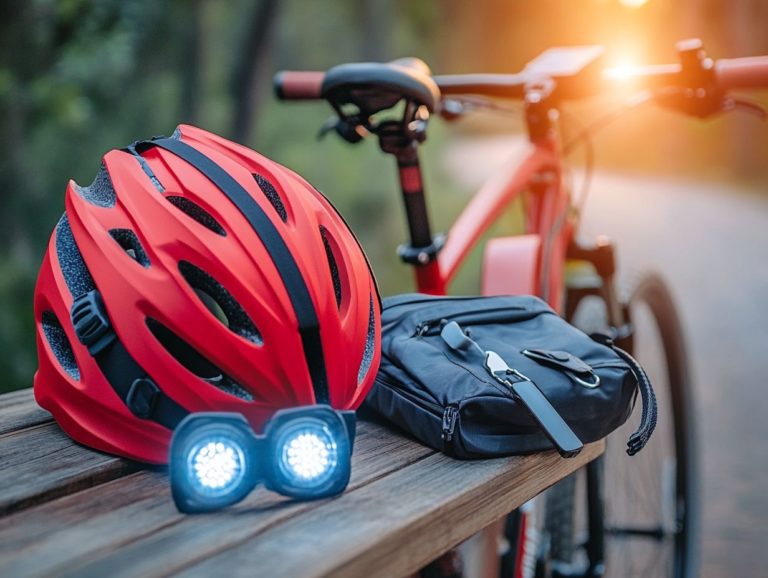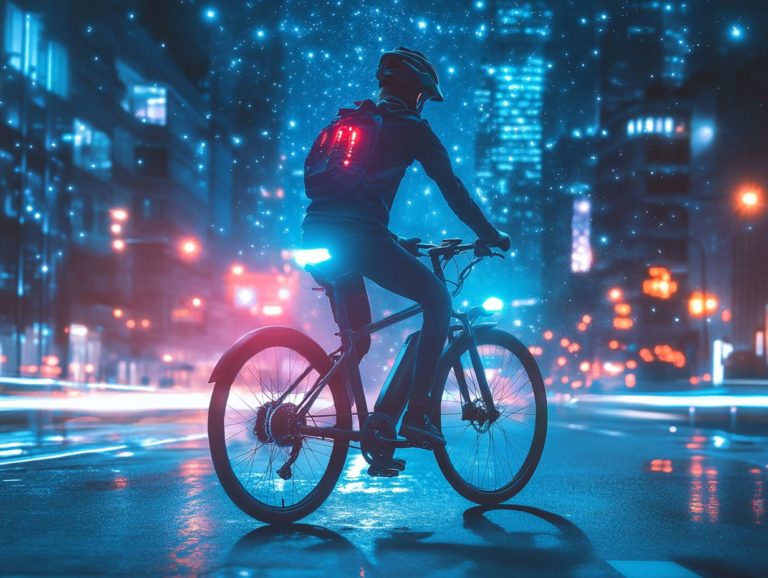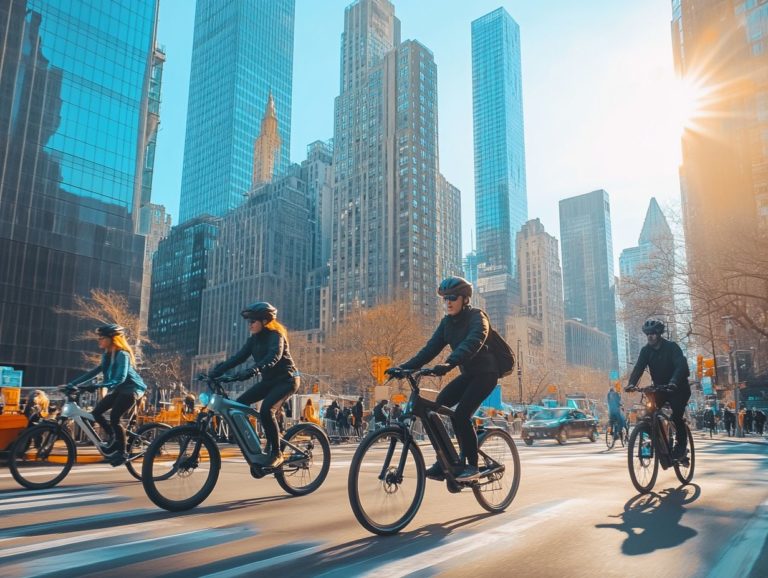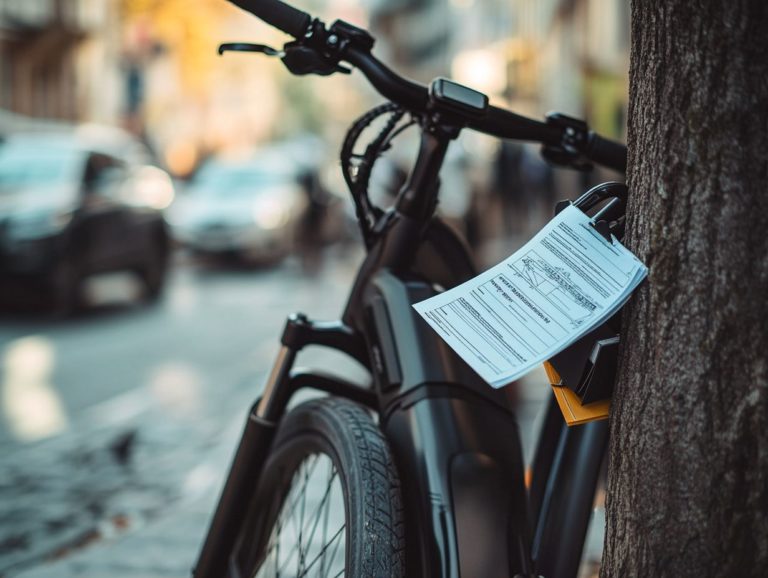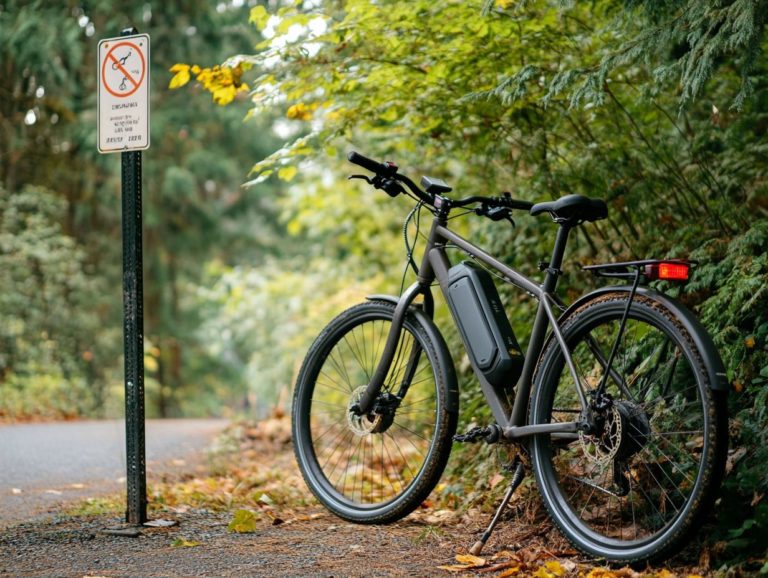Electric Bicycle Use in National Parks: What to Know
Electric bicycles, known as e-bikes, are changing how we enjoy the outdoors. They make exploring national parks exciting and eco-friendly. With their user-friendly features, e-bikes offer an exhilarating way to navigate a variety of landscapes while significantly reducing your environmental impact.
This guide covers everything you need to know about using e-bikes in national parks, including regulations, benefits, important considerations, and responsible practices.
Get ready to discover the thrill of e-bikes in our national parks!
Contents
- Key Takeaways:
- Overview of Electric Bicycles in National Parks
- Benefits of Using an Electric Bicycle in National Parks
- Considerations Before Using an Electric Bicycle in National Parks
- Physical Fitness and Terrain Challenges
- Tips for Responsible and Sustainable Electric Bicycle Use
- Frequently Asked Questions
- Can I ride an electric bicycle in all national parks?
- What is the purpose of allowing electric bicycle use in national parks?
- Are there any restrictions on the type of electric bicycle allowed in national parks?
- Do I need a special permit to ride an electric bicycle in a national park?
- Can I ride my electric bicycle off-road in a national park?
- Are there any age restrictions for riding an electric bicycle in a national park?
Key Takeaways:
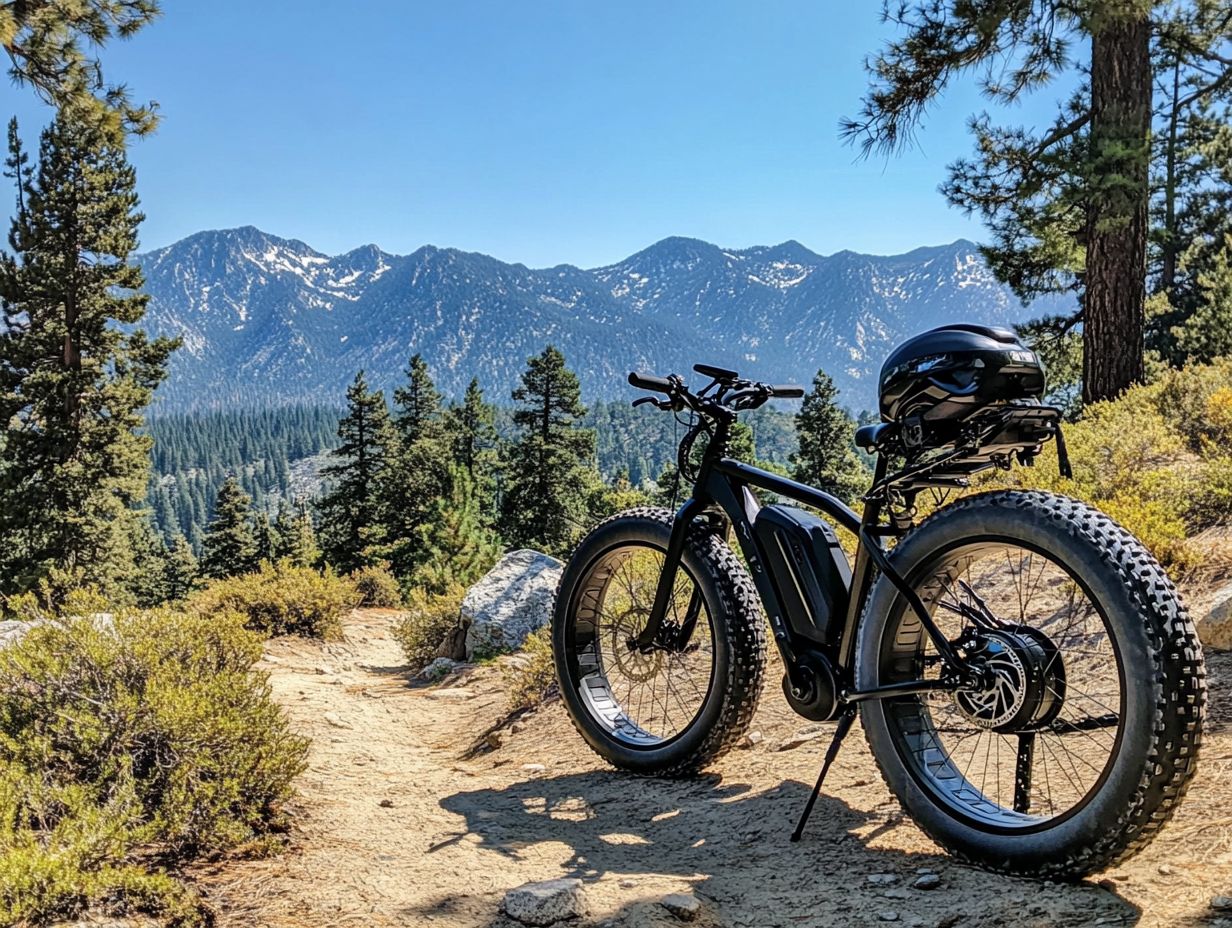
- Electric bicycles offer a more sustainable and accessible way to explore national parks while minimizing environmental impact.
- Before bringing an electric bicycle to a national park, be aware of equipment requirements, terrain challenges, and the need for responsible and sustainable use.
- To ensure a positive experience for all, it s important to follow park regulations, respect wildlife, and properly maintain and dispose of electric bicycle batteries.
Overview of Electric Bicycles in National Parks
Electric bicycles, or e-bikes as you may know them, have surged in popularity for navigating the breathtaking landscapes of national parks across the United States. Iconic locations like Yellowstone and Yosemite are now more accessible thanks to e-bikes.
These new electric bicycles offer a unique recreational option that aligns with the Department of the Interior’s commitment to sustainability and visitor safety. This commitment is reflected in regulations such as Secretary’s Orders 3366 and 3376.
With diverse classifications like Class 1, Class 2, and Class 3 e-bikes, park superintendents now have a versatile alternative to traditional transportation methods on public lands.
This overview explores the regulatory landscape, enhances your visitor experience, and highlights the increasing acceptance of e-bikes within American communities. It also touches on evolving e-bike policies in various states, like California and Virginia.
What are Electric Bicycles?
Electric bicycles, or e-bikes, are a modern blend of traditional cycling and technology. They feature an electric motor that helps you pedal, making them perfect for various terrains and distances.
E-bikes come in several types: Class 1, Class 2, and Class 3, each tailored to meet distinct riding preferences. Class 1 e-bikes offer pedal assistance only when you are pedaling, encouraging physical activity and making them ideal for those eager to include cycling in their fitness routine.
If you’re looking for something even more user-friendly, Class 2 e-bikes allow for throttle operation, perfect for those moments when you want a little less effort. For commuters seeking speed, Class 3 e-bikes provide higher speed limits, though registration may be required in certain areas.
These e-bikes are designed for everyone, ensuring easy riding for all ages and fitness levels. Whether you re a seasoned cyclist or a newcomer, there s an e-bike that fits your lifestyle perfectly.
National Park Regulations and Restrictions
National parks establish specific regulations for electric bicycles to ensure visitor safety and protect the stunning natural environment.
These policies are carefully crafted by the National Park Service (NPS) in collaboration with the Department of the Interior. They aim to balance recreation and conservation, reflecting guidelines set forth by David Bernhardt. For those interested in the specifics, electric bicycle path regulations categorize e-bikes into three types, each with its own set of rules about where you can ride within park boundaries.
Park superintendents play a vital role in enforcing these regulations. They assess the impact of e-bikes on ecosystems and visitor experiences. It’s crucial for you to understand these policies, including the electric bicycle laws. Being informed fosters responsible riding and protects the breathtaking landscapes everyone cherishes, ensuring that future generations can appreciate these treasured places.
Benefits of Using an Electric Bicycle in National Parks
Using an electric bicycle in national parks offers a wealth of benefits, from environmental gains to enriched recreational experiences. E-bikes reduce traffic congestion and lower greenhouse gas emissions, promoting biking and walking for outdoor adventures.
E-bikes combine adventure with sustainability, making them an appealing choice for park visitors. They enhance both safety and enjoyment without harming the pristine beauty of these natural spaces.
Environmental Impact
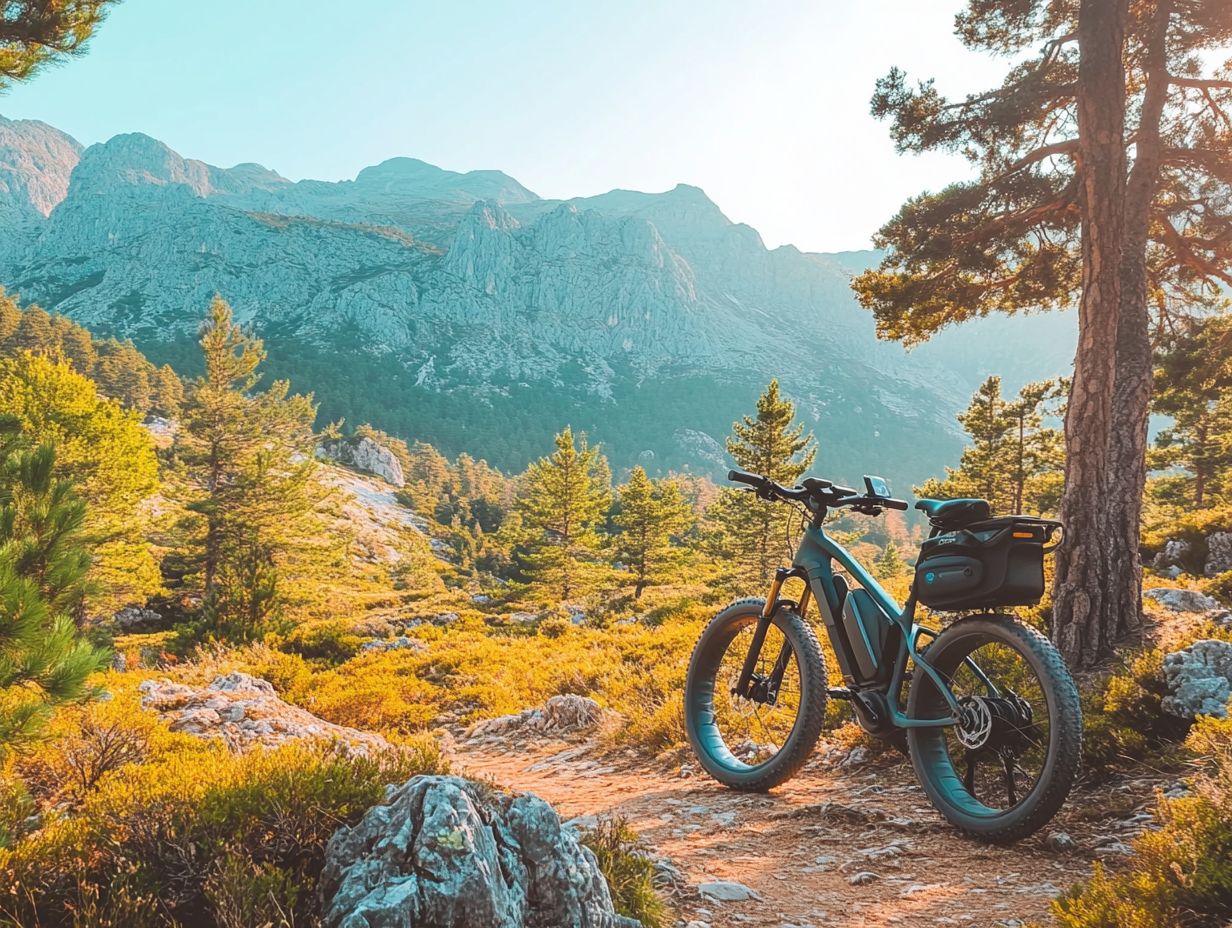
The environmental impact of electric bicycles is remarkable. They play a vital role in reducing greenhouse gas emissions compared to traditional gasoline-powered vehicles and support the biking and walking movement.
E-bikes offer a convenient and efficient way to explore popular parks and natural areas. This shift toward eco-friendly transportation eases traffic congestion and fosters sustainable tourism.
Experience nature like never before! As you ride an e-bike, you can connect more closely with nature while keeping your carbon footprint low, protecting delicate ecosystems and ensuring sustainable tourism.
E-bikes provide access to remote destinations often overlooked, enhancing your recreational opportunities and overall experience. This balance between exploration and preservation safeguards essential resources and nurtures a deeper appreciation for the environment.
Accessibility and Convenience
E-bikes significantly enhance accessibility for visitors in national parks. They allow individuals of all fitness levels to enjoy outdoor activities with ease.
This is especially beneficial for seniors, families with young children, and those with limited mobility. They can explore trails and scenic routes without the usual fatigue that comes with traditional biking.
Riding on often rugged terrains becomes safer as you can maintain a controlled speed and respond effectively to changing landscapes. These bikes create amazing opportunities for fun outdoors, inspiring you to embrace the great outdoors with renewed enthusiasm.
Considerations Before Using an Electric Bicycle in National Parks
Get ready for your electric bicycle adventure in national parks! It’s essential to evaluate your equipment and gear needs and your personal physical fitness levels to ensure your ride complies with park regulations and state laws.
Equipment and Gear Requirements
When gearing up for an e-bike adventure, having the right equipment and gear is crucial for a safe and enjoyable outing.
A well-fitted helmet should be your top priority. It acts as your primary shield against head injuries, especially important with the unique dynamics of e-bikes. Don t underestimate the importance of reliable lights and reflectors if you’re planning to ride during those magical dawn or dusk hours. These features increase your visibility, making you stand out to fellow park visitors.
Wearing reflective clothing can elevate your safety, ensuring you are noticeable on the trail. Follow park regulations by sticking to designated trails and being mindful of speed limits. This not only safeguards your well-being but also fosters a respectful outdoor experience for everyone.
Grab your helmet and hit the trails with an e-bike to discover the beauty of nature today!
Physical Fitness and Terrain Challenges
Know your physical fitness levels when riding e-bikes in national parks. You’ll face diverse terrain challenges, so it’s important to be prepared.
From steep hills to rocky paths and smooth paved trails, it’s vital to align your capabilities with the route you choose. If you re planning an adventure, evaluating your endurance, strength, and balance becomes crucial, as some trails may require more physical effort than others.
Understanding how different terrains impact your riding experience can lead to a more enjoyable journey. For example, you may need extra stamina for uphill climbs or enhanced agility on uneven ground. Take the time to assess your fitness levels and select trails that match your skills to ensure a safer and more satisfying ride.
Tips for Responsible and Sustainable Electric Bicycle Use
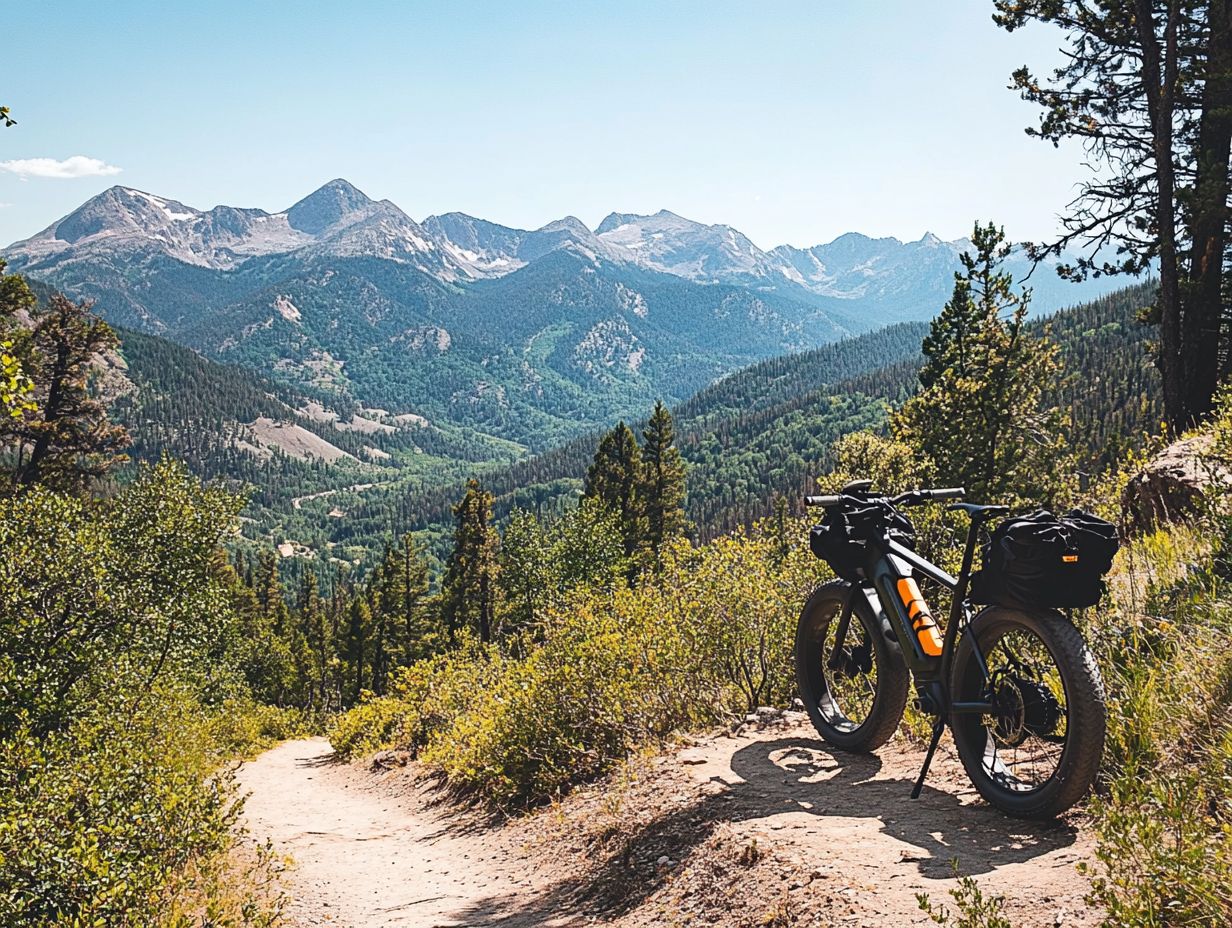
Practicing responsible and sustainable use of electric bicycles in national parks elevates your visitor experience while safeguarding the natural habitats and wildlife that define these remarkable areas. Follow the NPS Trip Planning Guide and use tools like AllTrails and Chimani.
By riding with care, you contribute to the preservation of breathtaking landscapes and diverse ecosystems that make national parks exceptional.
Respecting Park Rules and Wildlife
Respecting park rules and wildlife is vital for your safety and that of the natural environment while you enjoy e-biking in national parks. Stick to designated trails to help preserve delicate ecosystems and reduce the risk of disturbing local wildlife.
Observing speed limits enhances your riding experience and protects pedestrians and other park users, creating a safer environment for everyone.
To minimize your impact, consider making noise while riding. This simple act alerts nearby animals to your presence, allowing them to move to safety. Understanding wildlife behaviors will guide your planning and help you choose rides that avoid sensitive times, fostering a more respectful relationship with nature.
Your responsible riding choices contribute to a more enjoyable and safe experience for everyone in the park.
Proper Maintenance and Disposal of Batteries
Proper maintenance and disposal of e-bike batteries are vital aspects of sustainable practices that enhance the environmental benefits of using electric bicycles. Routinely checking your battery’s performance extends its lifespan and ensures you enjoy optimal riding performance.
This diligence minimizes safety hazards, such as overheating or insufficient power output, allowing you to ride with confidence. Regular maintenance rituals like cleaning connections and watching for signs of wear give you the power to take charge of your cycling experience.
When it’s time to dispose of your battery, seek eco-friendly options, such as recycling programs tailored for lithium-ion batteries. By recycling, you play a part in a bigger sustainability mission!
Frequently Asked Questions
-
Can I ride an electric bicycle in all national parks?
-
No, electric bicycles are only allowed in certain national parks. It is important to check with the specific park’s regulations before bringing an electric bicycle.
-
What is the purpose of allowing electric bicycle use in national parks?
The purpose is to provide more accessibility and options for visitors to explore the parks while still preserving the natural environment.
-
Are there any restrictions on the type of electric bicycle allowed in national parks?
-
Yes, only Class 1 electric bicycles are allowed in national parks. These are bikes that help you pedal with a maximum speed of 20 mph and do not have a throttle.
Get ready for your next adventure in the great outdoors!
Do I need a special permit to ride an electric bicycle in a national park?
No, you don’t need a special permit to ride an electric bicycle in national parks. You will, however, need a regular park entry or camping permit.
Can I ride my electric bicycle off-road in a national park?
No, electric bicycles are only allowed on designated roads and trails within national parks. Riding off-road is not allowed because it can harm the environment.
Are there any age restrictions for riding an electric bicycle in a national park?
Yes, you must be at least 16 years old to ride an electric bicycle in a national park. If you’re under 18, wearing a helmet is mandatory.

